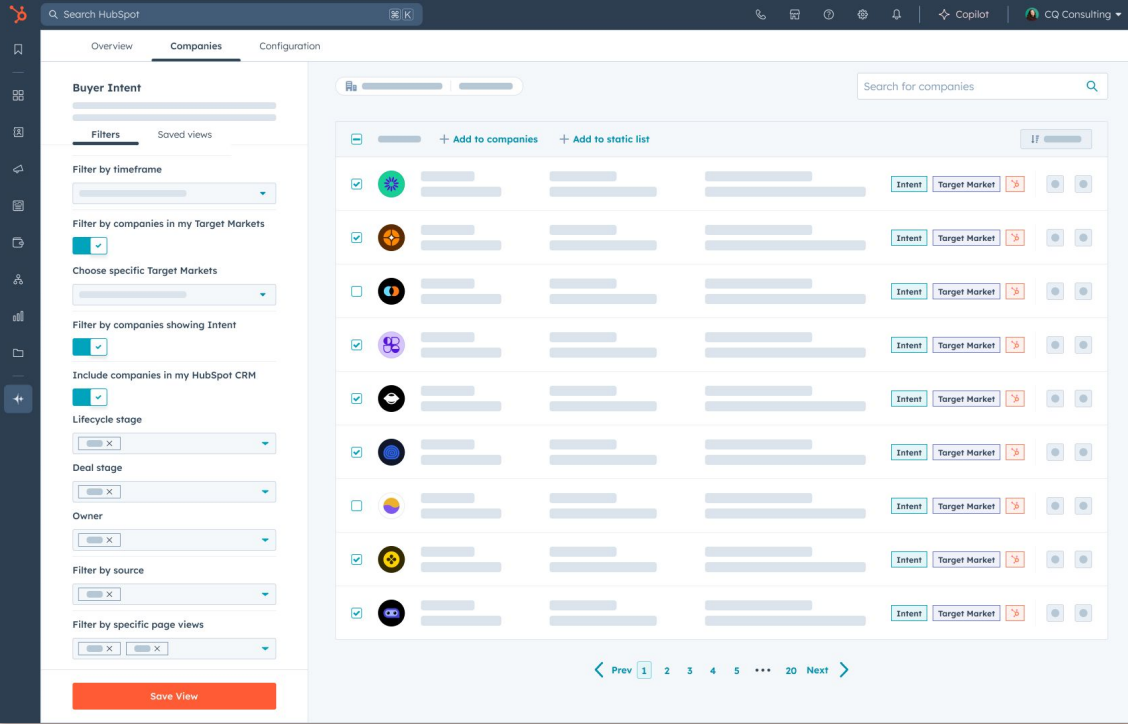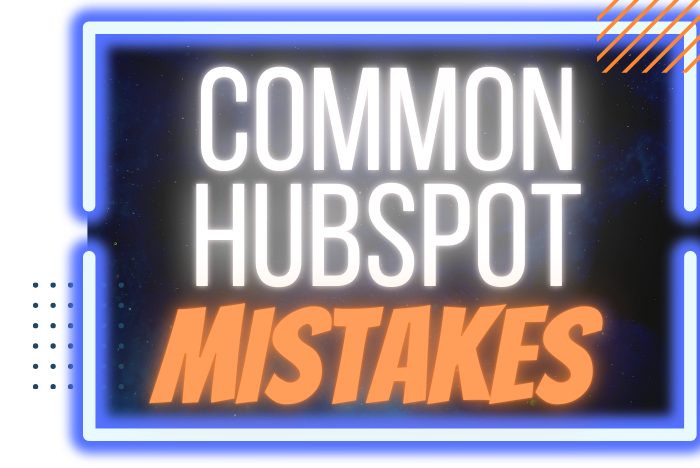Customer Relationship Management (CRM) systems are indispensable for managing interactions with clients, optimizing sales processes, and driving business growth. Systems like Salesforce and HubSpot provide robust tools for companies to streamline operations and personalize interactions, ultimately enhancing customer satisfaction. However, while CRMs promise efficiency, businesses often encounter challenges or make critical missteps in CRM management that lead to decreased productivity, data inaccuracy, and missed revenue opportunities.
Pitfall 1: Poor Data Quality
A CRM is only as valuable as the data it contains. Poor data quality—manifesting as duplicate records, missing information, or outdated contacts—can hamper CRM efficiency, hinder user adoption, and lead to reduced customer satisfaction. When sales and marketing teams lack reliable data, their ability to engage with clients effectively is compromised, often resulting in missed opportunities and poor customer experiences.
Consequences of Poor Data Quality
- Lower User Adoption: When users encounter incorrect data, they’re less likely to trust the CRM, leading to lower adoption rates.
- Reduced Customer Satisfaction: Reaching out to customers with outdated or incorrect information can tarnish your brand image and frustrate clients.
- Missed Opportunities: Inaccurate data leads to inefficiencies in targeting, ultimately causing lost revenue.
Tips to Maintain Data Quality
-
Implement Data Validation Rules: Set up mandatory fields and validation rules within your CRM to ensure data entry is consistent and comprehensive. Salesforce and HubSpot both allow for custom field validation, which can prevent the entry of incomplete or incorrect information.
-
Regular Data Audits: Schedule periodic data reviews to identify duplicates, update outdated information, and clean up incomplete entries.
-
Use De-duplication Tools: Salesforce offers the “Duplicate Management” feature, while HubSpot has a “Duplicate Contact Detection” tool. Leverage these tools to identify and merge duplicate records.
-
Agency Tip: Our agency leverages custom validation workflows that align with each client’s specific data entry needs. Additionally, we conduct regular training sessions to reinforce best practices in data handling.
Pitfall 2: Lack of Customization to Business Needs
One of the significant advantages of CRMs like Salesforce and HubSpot is their flexibility. However, many businesses fall into the trap of using out-of-the-box setups, failing to tailor the CRM to their unique business processes. This lack of customization can result in inefficiencies, as the CRM may not fully support the specific needs of various teams.
Consequences of a Generic CRM Setup
- Misaligned Processes: Teams struggle to use a CRM that doesn’t reflect their workflow.
- Lower Productivity: Generic CRM setups require users to find workarounds, which can slow down productivity.
- Wasted Resources: Investing in a CRM without leveraging its customization potential can result in underused features and lost ROI.
Tips for Customizing CRM to Business Needs
-
Create Custom Fields and Objects: In Salesforce, custom fields can be added to capture unique data points relevant to your business, while HubSpot allows for similar customization in the form of custom properties.
-
Tailor Pipelines and Stages: Design sales pipelines that mirror your business's customer journey stages.
-
Develop Role-Specific Dashboards: Empower teams by creating dashboards that showcase the metrics and information relevant to their daily tasks.
-
Agency Tip: We provide custom onboarding sessions that guide each client through the customization process, ensuring the CRM is tailored to their specific processes.
Pitfall 3: Poor User Adoption
A robust CRM system is only effective if team members use it consistently. Low user adoption is one of the most pervasive challenges CRM systems face, often resulting from insufficient training, lack of intuitive setup, or perceived lack of value.
Consequences of Low User Adoption
- Incomplete Data: If users aren’t logging information, the CRM will lack a full picture of customer interactions.
- Reduced ROI: Unused CRM features represent wasted investments in both time and money.
- Inefficient Processes: Disconnected or siloed data can slow down processes and make it challenging for teams to work collaboratively.
Tips to Boost User Adoption
-
Offer Intuitive CRM Training: Provide training that aligns CRM tasks with daily activities to make CRM usage second nature for users.
-
Implement Gamification: Integrate achievement badges or performance tracking to incentivize consistent usage among team members.
-
Appoint CRM Champions: Designate department-specific “ambassadors” to support team members with CRM-related queries and encourage best practices.
-
Agency Tip: We utilize micro-learning modules that integrate CRM activities with day-to-day tasks, allowing users to learn in real time as they work, significantly boosting user adoption.
Pitfall 4: Overloading the System with Integrations
Salesforce and HubSpot offer integration capabilities with hundreds of third-party applications, from marketing automation tools to customer support systems. However, an overabundance of integrations can lead to data conflicts, system lags, and ultimately a poor user experience.
Consequences of Excessive Integrations
- System Performance Issues: Too many integrations can slow down CRM performance, frustrating users.
- Data Conflicts: Multiple sources of data can lead to duplicates and inaccuracies.
- Reduced Usability: Overcomplicated CRMs are difficult to navigate and often suffer from low user adoption.
Tips for Streamlining CRM Integrations
-
Prioritize Essential Integrations: Limit integrations to tools that directly support business goals and provide a clear value-add.
-
Conduct Integration Audits: Regularly review your CRM integrations to identify and remove underused or redundant tools.
-
Agency Tip: We perform quarterly integration reviews for our clients to identify underused apps and ensure each integration contributes positively to CRM usability.
Pitfall 5: Misalignment Between Sales and Marketing
For CRM to be truly effective, it must bridge the gap between sales and marketing teams, enabling them to work toward unified goals. However, misalignment between these teams can lead to inconsistent customer experiences and missed revenue opportunities.
Consequences of Sales and Marketing Misalignment
- Customer Confusion: When sales and marketing send mixed messages, it creates a confusing experience for customers.
- Inefficiencies in Lead Management: Leads may fall through the cracks if there is no clear handoff process.
- Lost Revenue: Misalignment can result in unqualified leads reaching sales, while qualified leads may be neglected.
Tips to Foster Alignment
-
Map the Customer Journey Together: Ensure both teams have a unified view of the customer journey, using the CRM as a single source of truth.
-
Establish Shared Goals and Metrics: Align key performance indicators (KPIs) across sales and marketing teams to encourage collaborative efforts.
-
Define Lead Handoff Processes: Use CRM workflows to facilitate smooth lead handoffs from marketing to sales.
-
Agency Tip: We develop a custom lead-scoring model that ensures marketing-qualified leads (MQLs) are seamlessly transferred to sales as sales-qualified leads (SQLs), ensuring only high-quality leads reach the sales team.
Pitfall 6: Failure to Regularly Review and Update CRM Strategy
A CRM strategy should be dynamic, evolving with the business’s needs and market trends. However, many companies adopt a “set it and forget it” mentality, failing to periodically review and update their CRM strategy. This oversight can lead to missed opportunities and reduced competitiveness.
Consequences of a Stagnant CRM Strategy
- Missed Trends and Opportunities: Market trends and customer needs change, and a stagnant CRM strategy can lead to outdated processes.
- Increased Competitor Advantage: Competitors who adapt quickly to changing trends will be better positioned to win customers.
- Reduced CRM Effectiveness: As the business grows, a rigid CRM strategy may no longer align with current needs.
Tips for Keeping Your CRM Strategy Updated
-
Conduct Annual Strategy Reviews: Reassess CRM goals and align them with current business objectives.
-
Seek User Feedback: Regularly gather input from end users to identify improvement areas.
-
Agency Tip: Our team offers biannual CRM optimization consultations to help clients refine their CRM strategies and address emerging challenges.
Pitfall 7: Neglecting Data Privacy and Compliance
With data privacy regulations such as GDPR and CCPA, maintaining data privacy in CRM systems is more important than ever. Failing to adhere to data privacy standards can result in significant legal repercussions and erode customer trust.
Consequences of Non-compliance
- Legal and Financial Risks: Non-compliance can lead to costly fines and penalties.
- Loss of Customer Trust: Mishandling sensitive information can damage your brand reputation.
- Operational Interruptions: Privacy breaches may require significant time and resources to address.
Tips for Ensuring Data Privacy and Compliance
-
Implement Access Controls: Limit access to sensitive data to only those who need it.
-
Regular Data Cleansing: Periodically remove obsolete customer information from the CRM.
-
Agency Tip: We conduct regular compliance assessments and data audits for clients, helping them stay up-to-date with the latest privacy requirements.
Pitfall 8: Relying Too Heavily on Automation Without Human Oversight
Automation within CRMs, such as Salesforce and HubSpot, can significantly improve efficiency by handling repetitive tasks, streamlining lead nurturing, and managing communication. However, excessive reliance on automation without appropriate human oversight can dilute the quality of customer interactions, lead to impersonal communication, and miss nuances that require a personal touch. CRMs are powerful tools, but without balanced use, they can risk alienating customers and creating robotic, one-size-fits-all experiences.
Consequences of Over-Automation
- Impersonal Customer Experience: Automated responses can make customers feel undervalued if they sense the lack of human involvement.
- Inadequate Response to Unique Customer Needs: Automation may overlook cases that require unique problem-solving or empathy, leading to missed opportunities to build strong customer relationships.
- Automation Errors: Overly complex automation workflows can lead to errors or misfires, such as sending irrelevant content to contacts, causing confusion or dissatisfaction.
Tips for Balanced CRM Automation
-
Identify High-Touch Interactions for Human Oversight: Certain customer interactions—such as major deals, high-value customers, or complaints—require a personalized response. Assign these high-touch interactions to team members to ensure appropriate attention.
-
Establish Escalation Triggers: Set up automated triggers to escalate specific scenarios to a human representative. For example, Salesforce’s Flow and HubSpot’s Workflows can be programmed to alert a team member when a lead meets specific criteria for personal follow-up.
-
Conduct Regular Reviews of Automated Workflows: Periodically audit automation workflows to ensure they remain relevant, error-free, and properly aligned with customer needs.
-
Agency Tip: We help our clients build “smart escalation workflows” that leverage automation for initial responses but notify sales or support teams when a lead or customer interaction requires personal engagement. This approach ensures a balance between efficiency and meaningful customer interactions.
Pitfall 9: Ignoring Analytics and Reporting
Data analytics is a core component of CRM effectiveness, as it provides insights into customer behavior, sales trends, and operational efficiencies. However, many businesses fail to fully utilize CRM analytics, missing critical insights that could drive decision-making. CRMs like Salesforce and HubSpot come with powerful reporting capabilities, yet without regular use, these tools can quickly lose their impact.
Consequences of Overlooking Analytics
- Missed Business Insights: Failing to track key metrics results in a lack of understanding of sales performance, marketing impact, and customer satisfaction.
- Inability to Track ROI: Without regular reporting, it’s challenging to assess the ROI of CRM initiatives and optimize spending.
- Lack of Data-Driven Decisions: Analytics enable data-driven strategies. Without them, decisions may be based on assumptions rather than actual performance metrics.
Tips for Effective Use of CRM Analytics
-
Set Up Regular Reporting Dashboards: Both Salesforce and HubSpot allow users to create dashboards with customizable widgets that track essential KPIs like conversion rates, lead response times, and retention metrics.
-
Schedule Analytics Reviews: Regularly review analytics reports to identify trends, uncover improvement areas, and adjust strategies accordingly.
-
Focus on Actionable Metrics: Track metrics that align with your business goals, such as pipeline growth, customer engagement rates, or sales velocity. Avoid vanity metrics that don’t directly impact decision-making.
-
Agency Tip: We design custom reporting dashboards tailored to each client’s specific goals and priorities. Our dashboards consolidate critical metrics in an easy-to-digest format, enabling clients to act on insights without spending excessive time on data analysis.
Pitfall 10: Inadequate Support and Troubleshooting Systems
A CRM system requires ongoing maintenance, and even minor technical issues can disrupt workflows if not resolved swiftly. Without a reliable support and troubleshooting system, users may experience frustration, reduced productivity, and even a loss of confidence in the CRM’s effectiveness. Particularly for large teams, the absence of structured support protocols can lead to unresolved issues that snowball into larger problems.
Consequences of Limited CRM Support
- Reduced User Productivity: If CRM issues are left unresolved, users may struggle to perform tasks effectively.
- Increased Frustration and Low Morale: Technical difficulties can lead to frustration, resulting in lower user satisfaction and even decreased CRM adoption.
- Decreased Data Quality and Usability: Issues that go unaddressed can lead to data inaccuracies or incomplete customer records, affecting decision-making and customer service.
Tips for Effective CRM Support Systems
-
Establish Standard Operating Procedures (SOPs): Define clear troubleshooting workflows and escalation protocols so users know how to address common issues.
-
Designate a Support Team or CRM Admin: Having a dedicated CRM administrator or support team that users can turn to for help ensures swift issue resolution and consistent support.
-
Provide Training Refreshers and Documentation: Document common troubleshooting steps and provide refresher training sessions to equip users with problem-solving skills.
-
Agency Tip: We offer ongoing CRM support and troubleshooting services as part of our partnership with clients. Our team provides regular training refreshers and personalized assistance, ensuring users have a dependable resource when they encounter issues.
Final Takeaways
Leveraging CRM systems like Salesforce and HubSpot is essential for maintaining customer relationships, optimizing sales processes, and driving growth. However, as we’ve explored, there are several common pitfalls that can undermine the effectiveness of a CRM system. From poor data quality to low user adoption and inadequate support, these issues can reduce the return on your CRM investment and negatively impact customer experience.
Here’s a quick recap of the key pitfalls and solutions:
- Poor Data Quality: Regular data validation and de-duplication processes prevent inaccuracies and keep your CRM data reliable.
- Lack of Customization: Tailor your CRM to align with your specific business processes for improved efficiency and user satisfaction.
- Low User Adoption: Drive adoption through intuitive training, gamification, and CRM champions.
- Overloading with Integrations: Keep your CRM streamlined by prioritizing essential integrations and conducting periodic audits.
- Misalignment Between Sales and Marketing: Foster alignment through shared goals, lead handoff processes, and unified customer journey mapping.
- Failure to Update CRM Strategy: Conduct regular CRM strategy reviews to adapt to changing business needs and market trends.
- Neglecting Data Privacy and Compliance: Ensure data privacy through access controls and regular audits to avoid legal repercussions and maintain customer trust.
- Excessive Automation: Balance automation with human oversight to provide a personalized customer experience.
- Ignoring Analytics and Reporting: Utilize CRM analytics to gain insights, track ROI, and make data-driven decisions.
- Lack of Support Systems: Provide robust CRM support to minimize technical disruptions and enhance user experience.
SaaS Solutions is committed to helping clients avoid these pitfalls, offering strategic CRM management and support tailored to each organization’s unique needs. By working with a CRM partner that prioritizes data quality, customization, and ongoing support, businesses can maximize the impact of their Salesforce or HubSpot systems.
Whether you’re looking to improve user adoption, streamline workflows, or optimize data privacy, our team is here to ensure your CRM is a reliable and effective tool for growth. Connect with us today to learn more about how we can support your journey to strategic, error-free CRM management.




